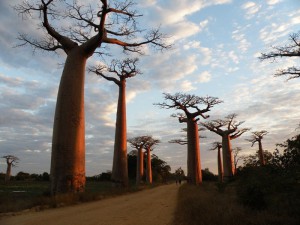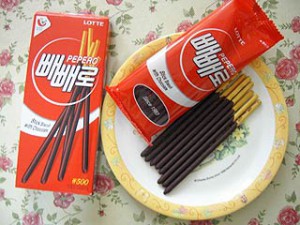Item:
“The Baobab tree, also known as the upside-down tree, is a strange looking tree that grows in low-lying areas in Africa and Australia. The Baobab is also called the upside-down tree because when bare of leaves, the spreading branches of the Baobab look like roots sticking up into the air, as if it had been planted upside-down. Legend holds that god Thora took a dislike to the Baobab growing in his garden, so he threw it out over the wall of Paradise on to Earth below, and although the tree landed upside-down it continued to grow. Another story goes that when the Baobab was planted by God, it kept walking, so God pulled it up and replanted it upside down to stop it moving. Bushmen believed that any person who plucks the flowers will be torn apart by lions, because there are spirits in the flowers. When water is drunk, in which the Baobab’s pips have been soaked, this serves as protection from crocodiles and the drinker will be mighty.”
Context:
The three items of folklore I collected from this informant were the only three out of all the items in my collection that were not a result of face to face interaction. The text above was sent to me, from the informant, via email. I also corresponded with the informant over the phone to receive the context behind her stories. That said, the informant, who lived most of her life in South Africa (she moved to Dallas, Texas with her family in the 90’s), heard all of these stories about the Baobab trees from the trackers who would lead the safaris she went on in South Africa. The trees did not grow where she grew up near Johannesburg.
Analysis:
In the first two stories about the tree, I see an expression of the traditional subject of minor myths; explaining why things are the way they are. In the folk beliefs of the bushmen, however, I see an intense tie to their surroundings. The tree, for them, is an extremely important part of their relationship with nature. In addition to these stories, the informant sent me some factual information about the tree: “The Baobab has a special role in Africa. Elephants, monkeys and baboons depend on its fruit (the vitamin C content of one fruit is the equivalent of 4 oranges); bats pollinate them by crashing into the flowers while chasing insects; bush babies also spread the pollen; the pollen can be used as glue; the seeds are rich in protein, calcium, oil and phosphates – they can also be roasted and ground like coffee beans; young leaves have a high calcium content and can be used as spinach; the trunk is fibrous and can be woven into rope mats and paper; beer and tea can be made from the bark, but you need a strong constitution to drink either.” These facts demonstrate the many ways in which the tree is used, by humans and animals alike. That said, all of these things the tree does augments the tie between it and the bushmen that is expressed in the stories.


